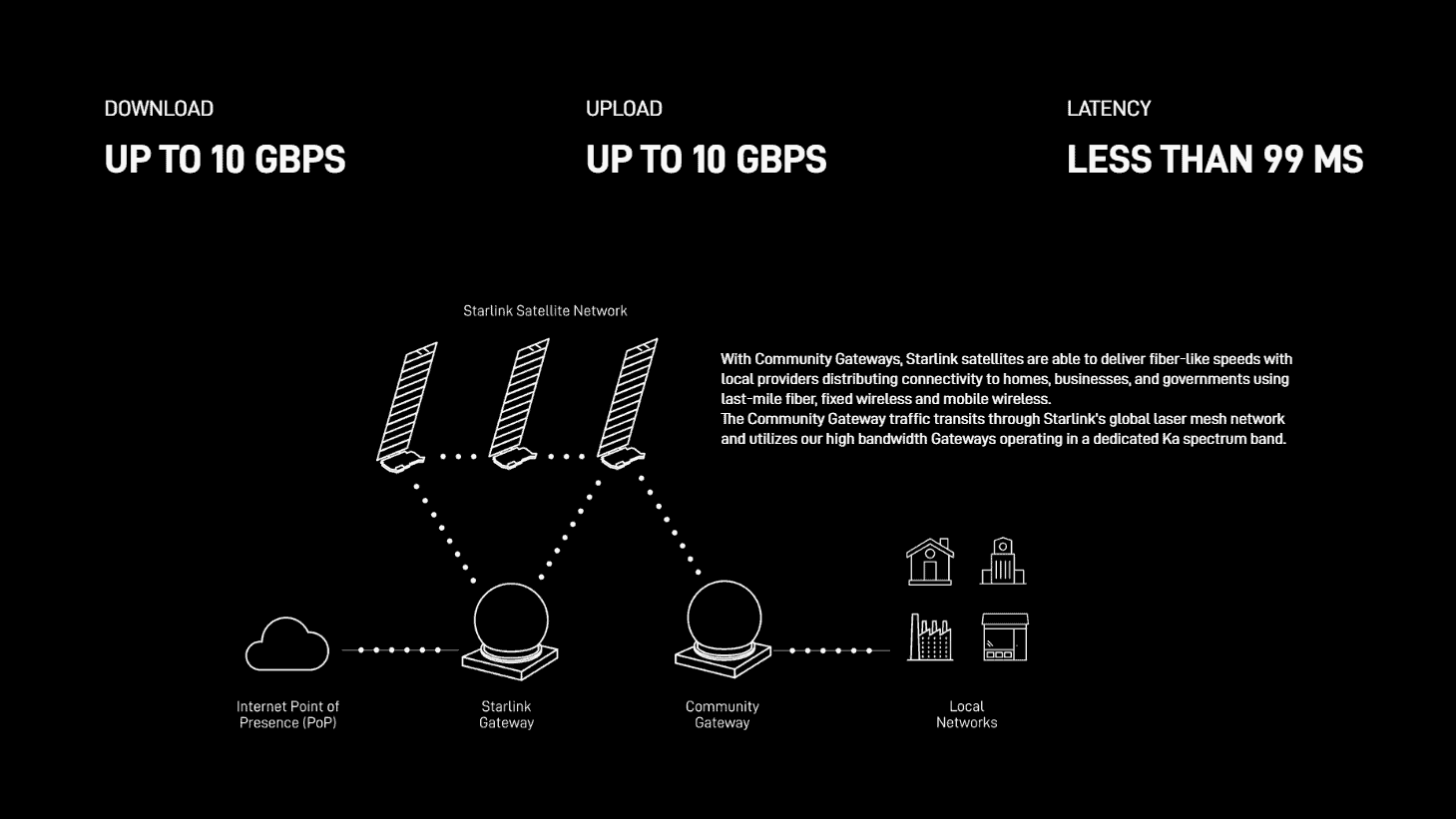SpaceX Introduces Starlink Community Gateways Service With a Hefty Price Tag
The high cost of Community Gateways may contribute to the digital divide rather than bridge it.

- SpaceX’s Starlink Community Gateways promise groundbreaking fiberlike speeds from space, potentially revolutionizing internet access in remote areas, but the hefty price tag of $75,000 per month raises concerns about accessibility and affordability.
- The gigabit speeds offered by Community Gateways not only enhance user experience but also aim to create innovations in telecommunication and research, positioning the service as cutting-edge but exclusive due to its high cost during its infancy.
- The first Community Gateway in Unalaska, Alaska, demonstrates the transformative impact of Starlink’s service in remote locations. However, industry criticisms focus on the substantial cost, raising questions about the economic feasibility and whether the service may contribute to the digital divide by catering to high-profile customers rather than a broader demographic.
SpaceX is making headlines once again after introducing its latest Starlink offering. The company’s latest venture, Starlink Community Gateways, has emerged as a groundbreaking solution to bridge connectivity gaps with its promise of delivering fiberlike speeds from space. This innovative service could revolutionize internet access, particularly in remote areas. However, the excitement surrounding Starlink’s capabilities is accompanied by a notable factor — the hefty price tag. The high cost of $75,000 per month raises a few eyebrows, as it elicits notable questions about accessibility and affordability.
Notable Features of Starlink Community Gateways

Starlink Community Gateways are designed to deliver fiberlike speeds directly from space. Starlink claims the service provides upload and download speeds up to 10 Gbps and less than 99 ms latency. With the assurance of gigabit speeds, the service transcends traditional limitations, offering users an unprecedented level of high-speed connectivity. The prospect of such remarkable satellite speeds can provide immense potential for individuals in remote locations or businesses and institutions requiring robust and fast communication networks.
The promised gigabit gateway speeds not only elevate the user experience but also open doors to innovations in telecommunication, research, and other areas where rapid data transfer is paramount. Community Gateways will fulfill a growing need for enhanced connectivity and also lay the groundwork for a new era in space-based internet services. The service is truly cutting-edge, and utilizing such technology does come with a higher cost during its infancy.
The High Cost of Gigabit Gateways
The unveiling of Starlink Community Gateways comes with a notable aspect that has stirred discussions within the tech community — the substantial cost. The pricing for gigabit gateways starts at a hefty $75,000 per month, with an upfront cost of $1.25 million to access the cutting-edge service. This cost structure has raised questions about the accessibility of Starlink’s service for a broader user base, as the premium pricing places it in an exclusive category.
The factors contributing to the high cost include the advanced satellite technology employed by SpaceX, the infrastructure required to maintain reliable connectivity from space, and the substantial investments in research and development.
Compared with existing internet services, Starlink’s offering emerges as a highly premium solution, catering to high-profile customers, businesses with specific connectivity needs, or regions where traditional internet infrastructure is challenging to establish. This pricing model prompts a critical examination of the economic feasibility for various users and sparks a conversation about the affordability of such advanced space-based internet services.
The First Community Gateway in Unalaska, Alaska

The inauguration of the first community gateway in Unalaska, a remote island community in Alaska, marked a significant milestone for Starlink’s service. Using local internet service provider OptimERA, Unalaska experienced a transformative impact as the gateway facilitated high-speed connectivity, overcoming traditional challenges associated with similar remote locations. Initial reports suggest that the results have been promising, with residents benefiting from enhanced internet access that was previously inaccessible. This success in Unalaska serves as a testament to the potential of Starlink Community Gateways to revolutionize connectivity in underserved areas.
As the results from the Unalaska launch continue to unfold, the current success sets a precedent for other remote and underserved regions. The results thus far offer hope for improved connectivity for home internet and cellular services that can positively impact education, health care, and economic opportunities.
Industry Criticisms and Concerns Regarding Community Gateways
The reaction to Starlink Community Gateways has been divisive, with some enthusiastic about the prospect of unprecedented high-speed connectivity and others voicing concerns about the substantial cost. The economic feasibility of Starlink’s offering raises questions about which demographics can afford such premium internet access. The pricing model may position the service as a niche offering for high-profile customers, businesses, or sectors with specific connectivity needs, potentially leaving out a broader demographic.
A primary mission of SpaceX and Starlink is to bridge the digital divide by offering high-speed connectivity to remote and underserved areas. With the introduction of a service that’s largely out of reach for the average consumer, it calls into question a layer of social and economic significance to SpaceX’s role in the broader space technology ecosystem. If the service is unattainable due to its high cost, the introduction of Community Gateways could contribute to the digital divide rather than bridge it.